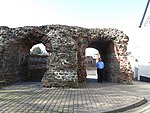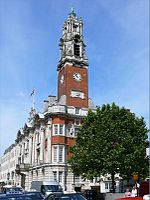Colchester Sixth Form College
1987 establishments in EnglandEducation in ColchesterEducational institutions established in 1987EngvarB from May 2018International Baccalaureate schools in England ... and 2 more
Learning and Skills BeaconsSixth form colleges in Essex

The Sixth Form College, Colchester is a sixth form college in Colchester, England. Established in 1987, it provides further education in the north Essex area.
Excerpt from the Wikipedia article Colchester Sixth Form College (License: CC BY-SA 3.0, Authors, Images).Colchester Sixth Form College
North Hill, Colchester
Geographical coordinates (GPS) Address Phone number Website External links Nearby Places Show on map
Geographical coordinates (GPS)
| Latitude | Longitude |
|---|---|
| N 51.891111111111 ° | E 0.895 ° |
Address
The Sixth Form College Colchester
North Hill
CO1 1SN Colchester
England, United Kingdom
Open on Google Maps









